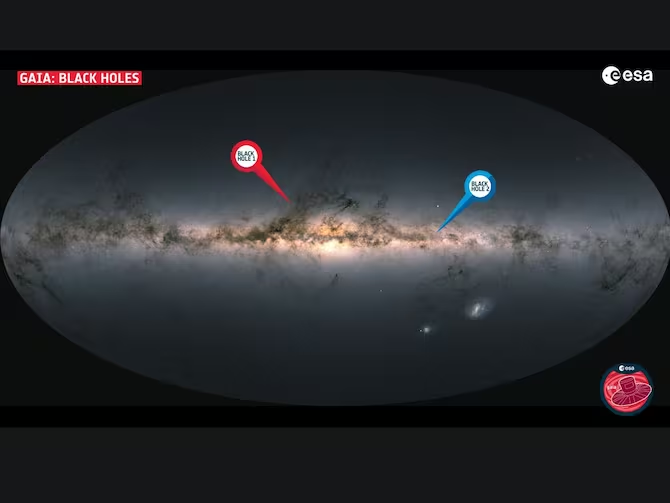
Two of closest-ever black holes to Earth discovered
text_fieldsParis: Astronomers have discovered two closest black holes to Earth. They are called BH1 and BH2. They are relatively close to Earth which made experts hopeful that there will be more opportunities to study these mysterious celestial objects.
BH1 is only 1,560 light years away from Earth in the direction of the constellation Ophiuchus. This is the closest black hole to Earth ever detected. The satellite Gaia of the European Space Agency (ESA) also found a second black hole BH2 only 3,800 light years away from Earth in the constellation Centaurus.
"In galactic terms, these black holes reside in our cosmic backyard," said ESA in a blog.
The team of astronomers was studying the orbits of stars tracked by Gaia when they noticed that some of them wobbled in the sky as if they were gravitationally influenced by massive objects. Several telescopes tried to find the objects but no light was detected. This led to the conclusion that black holes were present in that space.
"In both cases, the objects are approximately ten times more massive than our Sun. Other explanations for these massive companions, like double-star systems, were ruled out since they do not seem to emit any light," said ESA.
"What sets this new group of black holes apart from the ones we already knew about is their wide separation from their companion stars. These black holes likely have a completely different formation history than X-ray binaries," said Kareem El-Badry, discoverer of the new black holes.
ESA Science tweeted that the discovery alludes to a new family of blackholes which is invisible, relatively close by, and has stellar companions in large orbits around them.
Scientists think that by observing the effects of these black holes' gravity on nearby stars and gas, they can learn more about the properties and behaviour of black holes.





